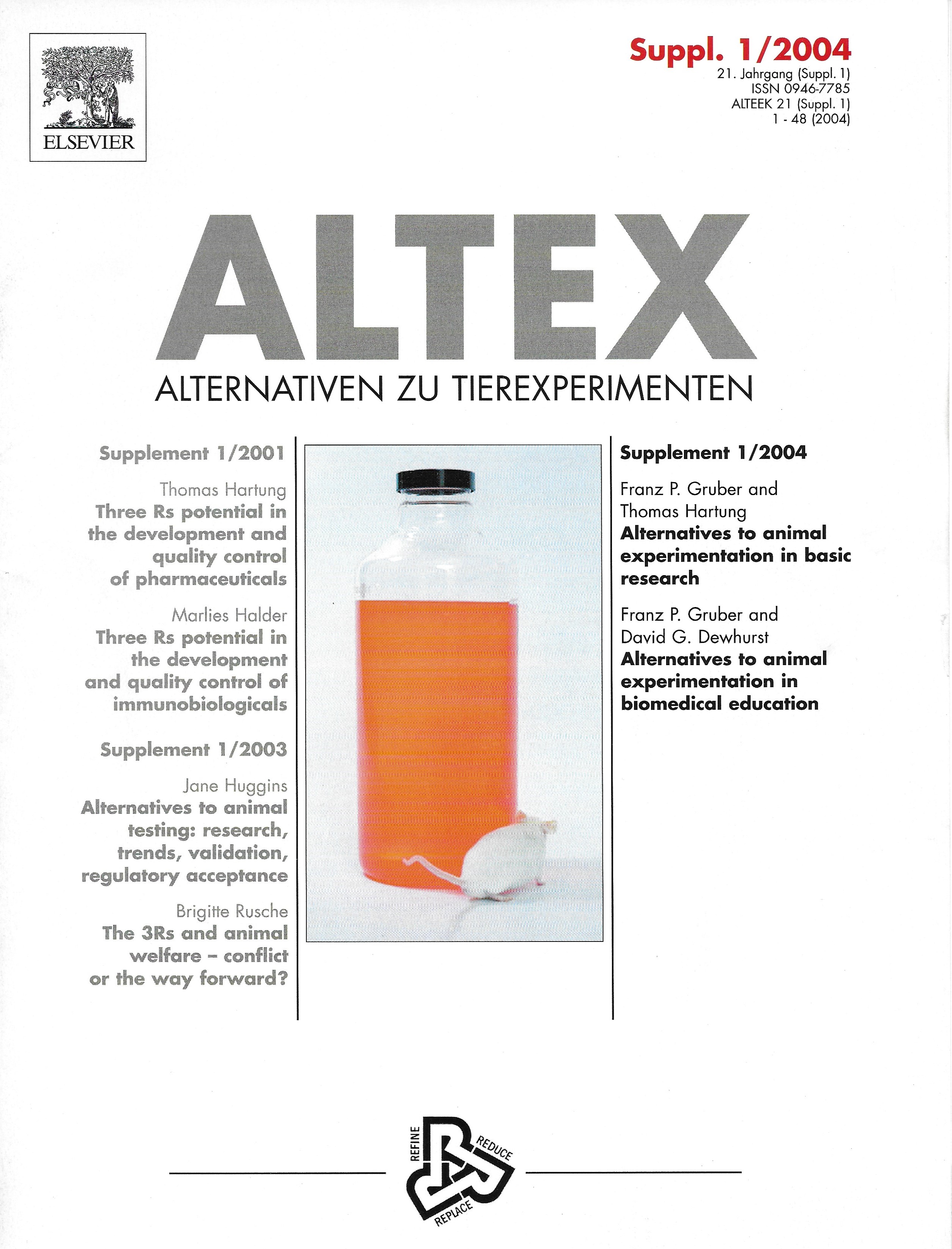Alternatives to animal experimentation in basic research
Main Article Content
Abstract
In contrast to animal testing required by law to guarantee minimum safety standards for the licensing of drugs and chemicals, there are no regulations in basic research forcing scientists to perform animal tests. By (usually) free choice, questions are posed and hypotheses are examined which, in many cases, can only be answered by means of animal tests. Just as easily, different questions could be asked or different hypotheses could be examined which do not require animal tests. The only criterion for the choice of a topic is its relevance which cannot necessarily be judged in the short-term. Thus, it is up to the individual scientist to judge what is worth studying and therefore worth animal consumption. The educated mind will consider ethical aspects of this choice. However, on the other hand, this decision is largely influenced by questions of efficacy or (in a negative sense) by the obstacles posed to an animal consuming approach. Here, peer review and general attitude will strongly influence the methodology chosen. Availability and awareness of adequate in vitro techniques represent the prerequisites for the use of alternative methods.
The least one can do in basic research is to avoid tests which cause severe suffering to animals, as is required in Switzerland and other European countries by binding ethical principles and guidelines. The increasing standard of approval and control procedures has improved the situation over the years.
There are many examples of successful alternative methods in basic research. But, the application of such methods is in most cases limited to the laboratories in which they were developed, calling for technology transfer. Exceptions are procedures that are used worldwide, like the production of monoclonal antibodies, which instead of using the ascites mouse can also be performed in vitro with some good will. In these cases, commercialisation of the techniques has aided their spread within the scientific community. Sadly, many methods, even if published in the scientific literature, are little standardised and reproducible. The suggestion is put forward that publicly accessible databases should make available more detailed descriptions of methodologies. Due to limitations in space, many scientific journals cannot publish detailed methodological descriptions. However, nowadays a supplementary central deposit of methods could easily be linked to the respective article.
In numerous cases though, there is simply a lack of will to change procedures to methods without animal tests or to pose questions differently in order to avoid the use of animals or to reduce their number or, at least, to reduce stress. In other cases, researchers are simply not aware of the limitations of the animal experiment as such. A thorough review of the validity of critical animal experiments should be carried out and made available publicly. For example, many animal experiments are dramatically "under-powered", i.e. carried out with groups that are too small to allow conclusions to be drawn from the outcome. This stands in marked contrast to in vitro experiments where replicate experiments usually represent no major problem.
Since in vitro models are generally more prone to artefacts due to the numerous variables, e.g. of cell culture, the key requirement for their application is their validation and quality control. Guided by the experience from validation studies for alternative methods in toxicology, concepts of a Good Cell Culture Practice (GCCP) are currently being developed which aim to define minimum quality standards for in vitro techniques. This initiative aiming to increase quality must be complemented by a concept to systematically assess the relevance of the tests in order to finally achieve an evidence-based biomedical research.
A change in this direction is only possible if those public funds, which were previously assigned predominantly to alternatives to the animal tests required by law, are now channelled increasingly into developing those for basic research. A financial incentive is necessary to change procedures in basic research to animal free procedures. Ethical considerations alone will bring little movement or change. It is unacceptable that, while numbers of animal tests decrease in development and notification of drugs and chemicals, they are increasing in basic research. Due to the central role of publishing scientific results, the key options for control are the respective rules of journals for the acceptance of articles. By demanding certain standards in the instructions for authors, e.g. of quality (GCCP), relevance and in case of animal experiments proof that no alternative is available, pressure could be dramatically increased. It is suggested to hold a consensus conference of journals in the life sciences on this topic.
Article Details

This work is licensed under a Creative Commons Attribution 4.0 International License.
Articles are distributed under the terms of the Creative Commons Attribution 4.0 International license (http://creativecommons.org/licenses/by/4.0/), which permits unrestricted use, distribution and reproduction in any medium, provided the original work is appropriately cited (CC-BY). Copyright on any article in ALTEX is retained by the author(s).


